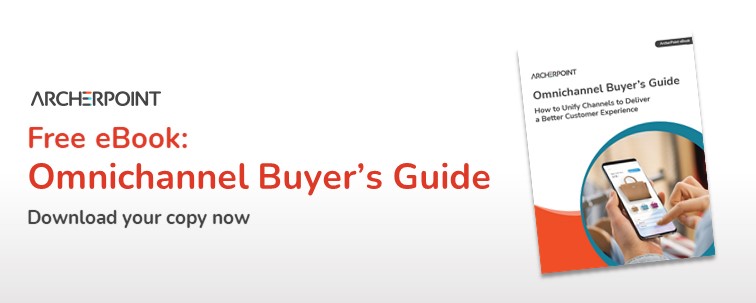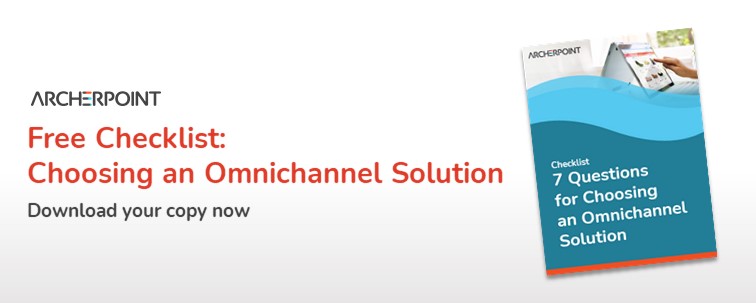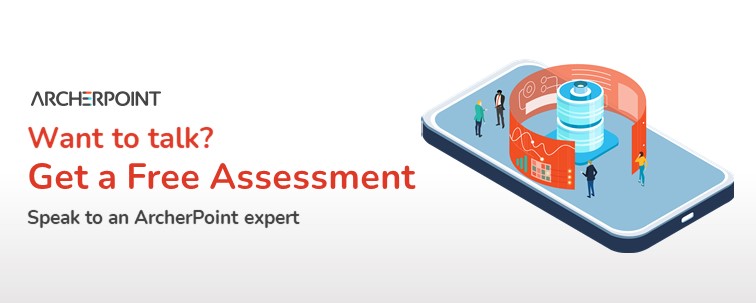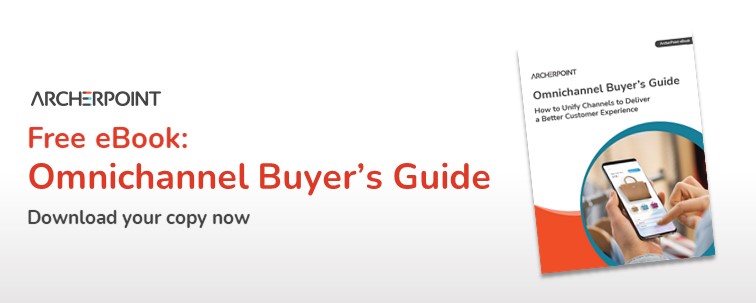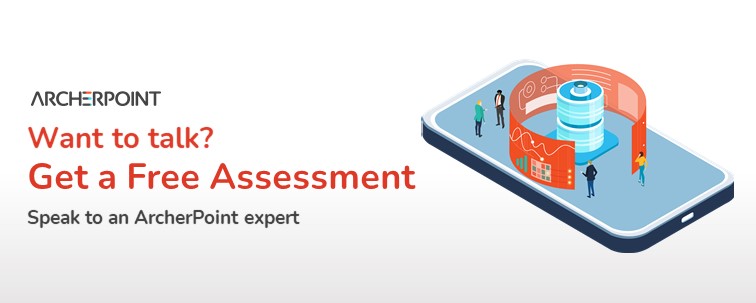The Modern Guide to Implementing an Omnichannel Retail Strategy

What is Omnichannel Retail?
Modern Behaviors, Modern Playbook
In 1931, Sears encouraged its customers to shop the “modern way” with its 1,100-page catalog, free from the hustle and bustle of stores. And while Sears had brick-and-mortar locations, the company was an innovative retail phenomenon that stole hearts by shipping goods by mail order across a rural, western countryside. They’d been successful doing it that way since 1893.
The mail-order strategy proved a successful multichannel approach that helped Sears dominate retail in categories from medical supplies to houses. At the time, visiting a physical store was often a challenge and a burden. Some customers were natural fits for mail order shopping since they were hundreds of miles from big cities. They paid extra for mail order service because of its “modern” convenience. On the other hand, city residents found more convenience shopping in stores, examining products before buying, and saving the cost of shipping.
Much changed from the 1930s to the 1990s. Transportation networks blossomed, car culture dominated, and new stores opened in previous outposts. Although consumers didn’t need catalogs anymore, by the time Sears shut down their famous catalog in the mid-1990s, they’d helped make multichannel sales the norm.
Modern retailers looked to predecessors such as Sears for ways to augment brick and mortar locations with alternative modalities. What they found were ways to expand sales and offer bigger inventories. eCommerce, as an emerging option, provided both advantages, but it also blurred the distinction between channels like “catalog” and “store.”
In the last several decades, customers’ shopping habits have increasingly shifted to channels of convenience for engaging with brands as well as for making purchases. The expectation is that consumers can engage with a brand through the Internet, direct mail catalogs, kiosks, pop-up and brick and mortar locations. Many shoppers who can easily shop in-store prefer to research online before shopping, or like to visit a store to browse, then buy online.
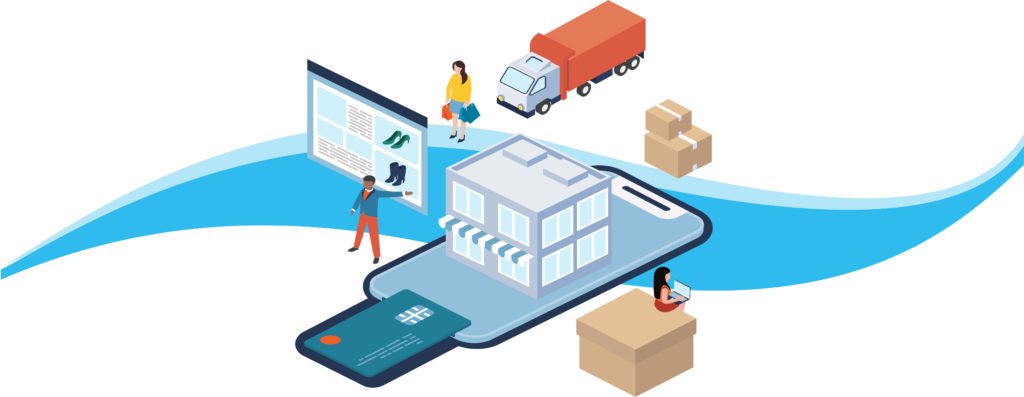
Their behaviors are unlike those of the previous generations, which often chose one channel over the other. Channels used to bridge the gap for customers who couldn’t access distant stores. Now, customers can and do access multiple channels en route to making a purchase.
Today’s buyer lives in a lightning-fast world of same-day pick-up, overnight shipping, multiple stores close by, and online options, too. Their access has changed, and their expectations reflect their “get it now” reality. The change in mindset is important in moving from multichannel to an omnichannel strategy, since channels now complement one another rather than compete for customers.
For example, customers using the internet to shop on an eCommerce site expect the same prices and styles they find in the store. They may buy online knowing they can return to a nearby store, regardless of whether that store carries their item. They expect to find items they’ve shopped in the store available to buy online. Pricing, promotions, customer service, and return options must now span channels, creating a singular buying and brand experience.
Our customers’ behavioral reality has given rise to a need for new processes and systems to deliver that exceptional customer experience and to remain both relevant and competitive in a rapidly changing retail landscape.
Unifying Commerce / Buying Touchpoints
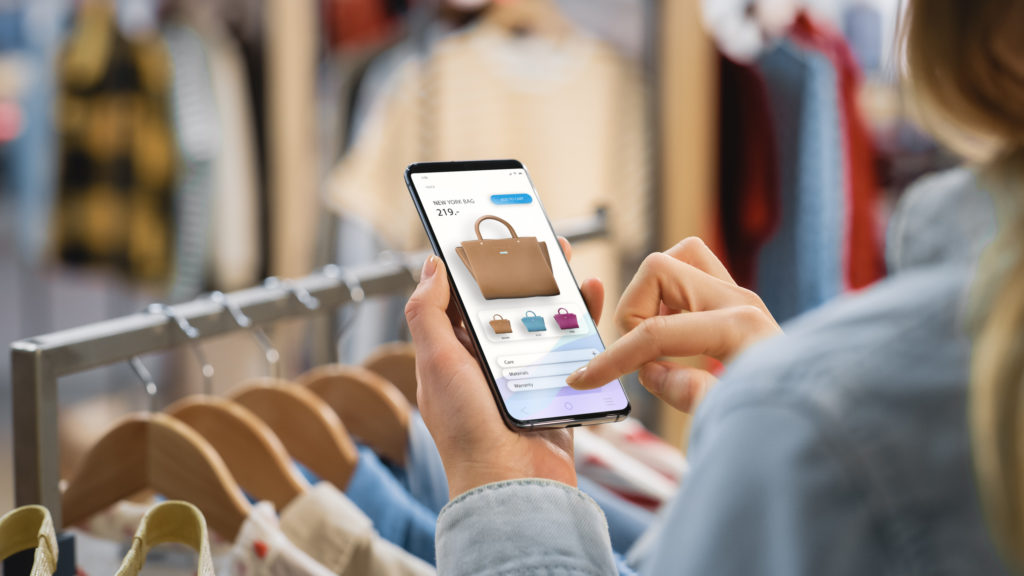
Omnichannel retail uses technological capabilities to bring together multiple channels, integrate their data, and provide shoppers with a unified experience across touchpoints.
For retailers looking to build loyalty and market share, that means managing a combination of channels to coordinate how their customers search, buy, and use their products—and then understanding how each touchpoint functions in the overall customer journey. An integrated omnichannel strategy goes beyond single sales modalities, like brick and mortar or online sales, to having a presence and availability at every point where their customers shop.
It seeks to craft a singular experience including customer service, price, marketing, and fulfillment across:
- Brick and mortar locations
- Branded eCommerce stores
- Mobile apps
- Social media and transactional bots
- Pop up kiosks in partner stores
- Catalog and direct mail
In an omnichannel world, touchpoints are not disparate sales outlets meant to help customers in different locations. They are parts of a buying journey, all with a role in customer satisfaction.
Common Multichannel Limitations
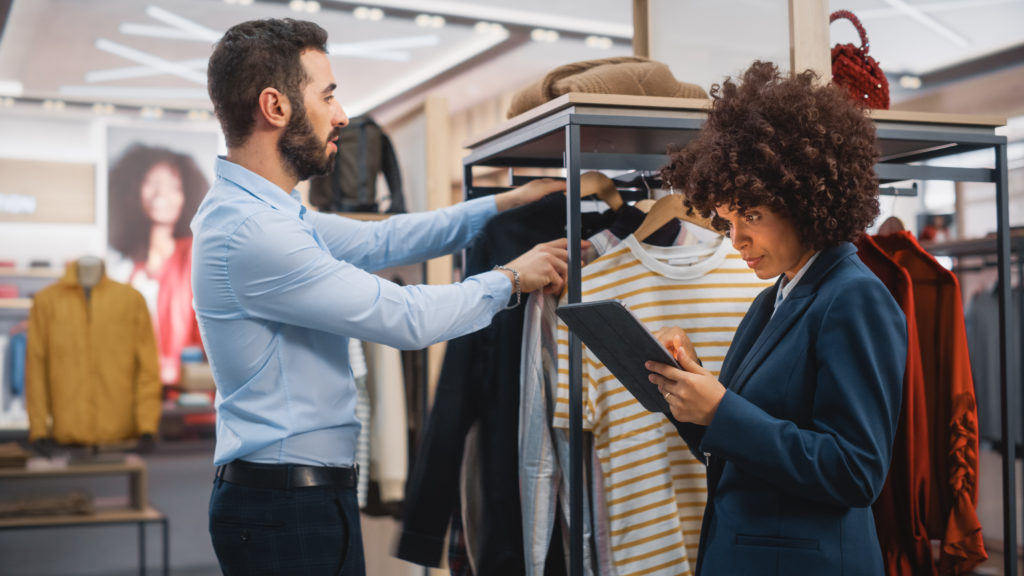
The goal of channels like online shops, kiosks in partner stores, and retail stores is no longer just to sell to an isolated pool of customers. So, the purpose of channel management must also change to fill gaps in an older, multichannel approach.
Here are some of the most significant multichannel limitations:

Brand channels are separated
Each is siloed with its own customer and inventory databases, and minimal cross-channel alignment. Brands want to capture customer data to develop complex retail supply chain activities for multiple touchpoints.

ZZZ
Customers struggle to interact across channels
They can’t seamlessly navigate between them as with omnichannel. The shopping experience can be different (and frustrating) for consumers who assume online and in-store options are the same, when product options, prices, and promotions are different.

ZZZ
Brands use digital channels to mitigate potential brick-and-mortar downturns
However, this approach fails to recognize channels as complementary. Online is not a substitute for brick and mortar. Thinking of channels separately hinders any strategy that could use channels to serve broader business goals.
Increasingly, retailers need a coordinated strategy to be everywhere their customers are, with the ability to evaluate channels systemically. Omnichannel sees unified commerce touchpoints along the customer journey, and the approach pays off. One study found that customers who used four or more channels spent 9% more in stores.
The State of Omnichannel Retail

Omnichannel retail builds on the multichannel goal of reaching customers in many places, unifying those places as a single digital landscape. And that landscape has barely known what hit it. COVID-19 did not so much start a cascade of digital adoption as it fast-tracked the need for retailers to serve customers they could no longer engage in person.
Let’s look at some key statistics:

ZZ
70% of retailers have introduced or increased their online channels.

ZZ
80% of customers in-store are comparing prices and inventory online while they are shopping
Unsurprisingly, most brands responded to lockdowns with an increased digital presence. 70% of locally-based retailers introduced or boosted their online channels. Yet, in 2020 Nike opened a cavernous Paris store with digital experiences embedded. The result? Its online sales jumped 37%. This cross-channel effect shows that retailers can benefit from choosing their channels wisely and understanding their synergistic effects. Omnichannel is here to stay.
Digital isn’t going anywhere, either. Smart devices are a regular fixture in the lives of customers, so it’s logical that the shopping experience would be increasingly influenced by these constant companions. In fact, some sources say customers will own an average of 15 smart devices by 2030. That opens up possibilities for heightening the shopping experience in and out of stores. Over 80% of in-store customers are already comparing pricing or checking inventory online on a smart device while they browse.
Necessity accelerated the evolution of multichannel to omnichannel retail. But it continues to grow with new customer expectations and technologies leading the charge. Increasingly, business leaders see the benefits of integration for both business intelligence and customer experience.
What Channels are Key in an Omnichannel Retail Strategy?

With new channels available to reach new customers, as well as platforms to engage with existing ones, brands planning on adopting an omnichannel approach should start by surveying what channels are available to integrate.
Brick and Mortar Stores
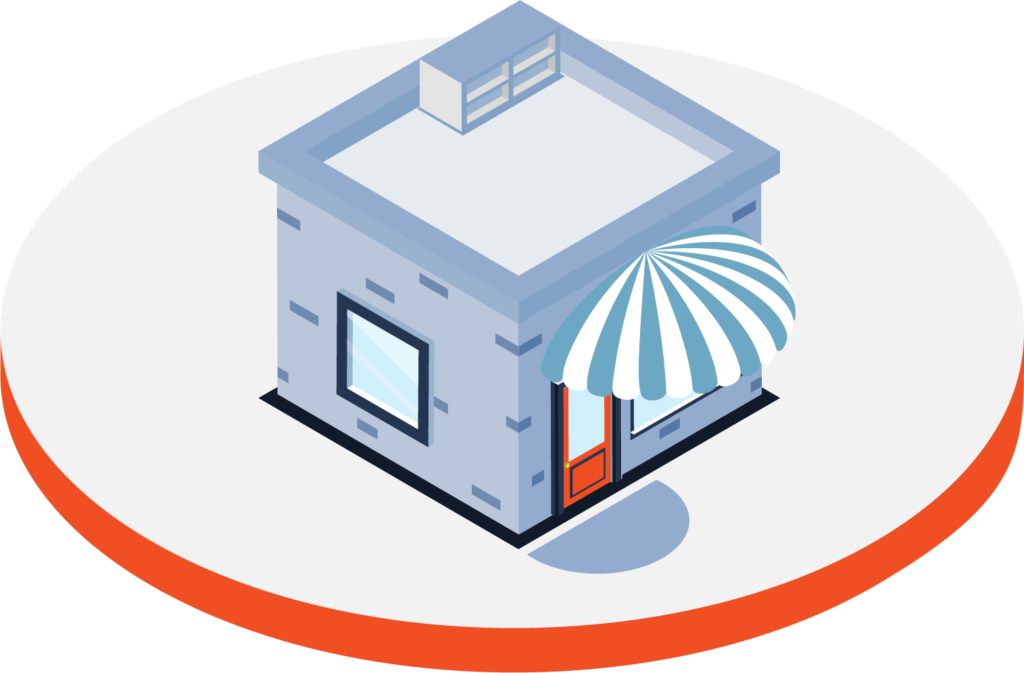
Brick and mortar stores fulfill the in-person shopping experience, complete with sounds and sights that lend to brand loyalty. An omnichannel approach recognizes that store engagement is more than a place to complete fulfillment, but one that can lead to purchases at other stores, outlets, and channels.
That includes different types of stores alongside different individual locations: big box stores, mid-sized retailers, small, independent local shops, and kiosks that serve a growing demand for touchless experiences, as well as online purchases.
Large and mid-sized retail stores increasingly serve an omnichannel strategy as modern showrooms, helping potential online shoppers examine physical products. Casper’s “Dreamery” is one such showroom. Customers pay to try out Casper mattresses, complete with snacks and pajamas, then buy online. Big-box retailer Best Buy has focused on what physical stores do well. While in the store, they encourage customers to touch, compare, and get advice, with in-shop brand stations and experts on hand.
Out-of-store showroom experiences are also on the rise. Using augmented reality (AR) app features, these modern showrooms have retailers like Home Depot help shoppers “try on” sink fixtures, front doors, and even patio furniture to see how it looks in their spaces. Amazon’s app has a similar AR feature for shoppers to scroll through products and virtually place them into their future homes.
eCommerce Sites and Direct to Consumer (DTC) eCommerce
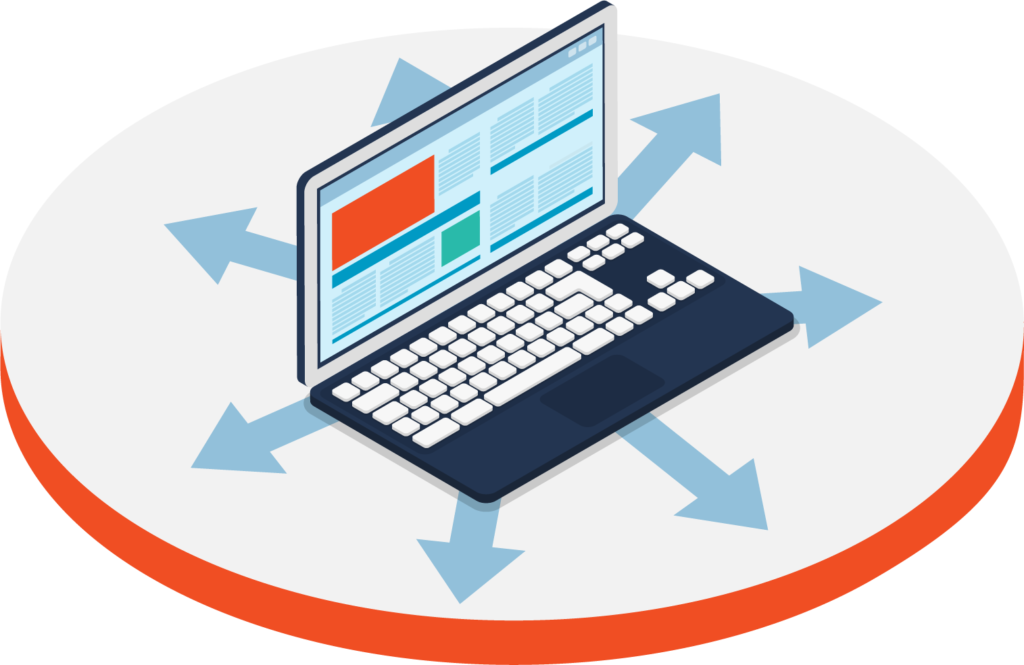
In 2000, eCommerce made up 1% of retail sales worldwide. By 2010, that was over 7%. It currently makes up more than 13% of retail sales in North America, spurred on by the value it provides in a fast-moving world.
While many have returned to stores following pandemic lockdowns, eCommerce has become a staple of many customers’ lives and is a significant channel that complements the overall omnichannel experience.
For example, while some customers want to examine goods in a store and then buy online, others shop online and make purchases in-store, called “webrooming.” The practice has encouraged retailers to integrate channels, enabling customers to buy online and pick up without shipping charges in a local store, for example. This leads to cross-selling and instant gratification for customers who don’t need to wait on shipping.
eCommerce sites come with their own omnichannel considerations. ERP-specific or custom eCommerce solutions may have been designed to work with a retailer’s inventory management. Leaders find they must now integrate with multiple other third-party logistics providers, warehouses, inventory systems, and suppliers.
Other brands use an eCommerce platform such as:
- Shopify
- WooCommerce
- Magento
- Miva
- Big Commerce
A true omnichannel solution integrates each POS and eCommerce platform for coordinated online and offline sales, offering inventory checks and features like “buy online, return in store” and “buy in store, ship to customer.”
eCommerce platforms can connect to ERP or accounting systems and vice versa. You can utilize the platform’s API for custom control, use a third-party with the platform’s API (without customization), or use an ERP integration.
Third-party solutions via API are connectors, software solutions that, along with an integration partner, sync your eCommerce with your backend management systems like inventory or ERP when direct integration is not available. For example, the Magento Marketplace offers ERP connectors for various systems that make integration possible out of the box. They allow functions like pooling inventory from multiple stores for order fulfillment, numerous return options, local inventory searching, omnichannel gift cards, and loyalty programs.
Marketplaces
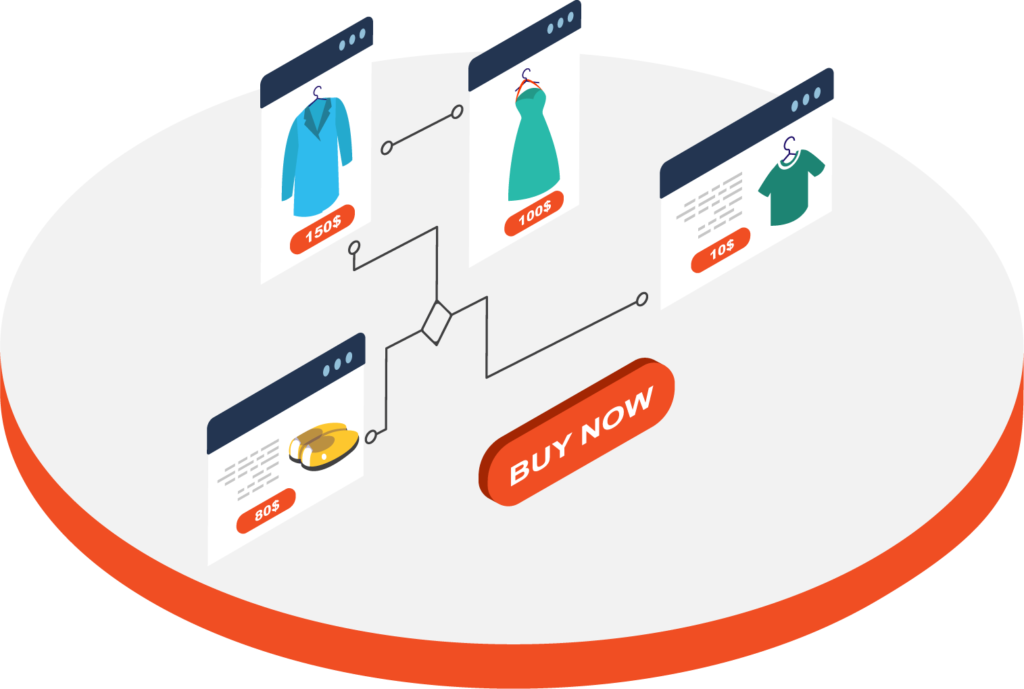
Online marketplaces can be a valuable part of an omnichannel plan. Customers expect a brand’s presence in common marketplaces, which offers brand exposure to markets they might not otherwise reach. Choose channels where your customers are likely to be, as well as those that enhance your brand presence and reputation:
- Amazon
- eBay
- Rakuten
- AliExpress
- Mercado
- Etsy
- Newegg
Another omnichannel benefit of marketplaces is the ease with which they make international scalability possible. With their own warehouses, affordable shipping costs, and multi-language sites, marketplaces can help retailers have a global presence.
Mobile
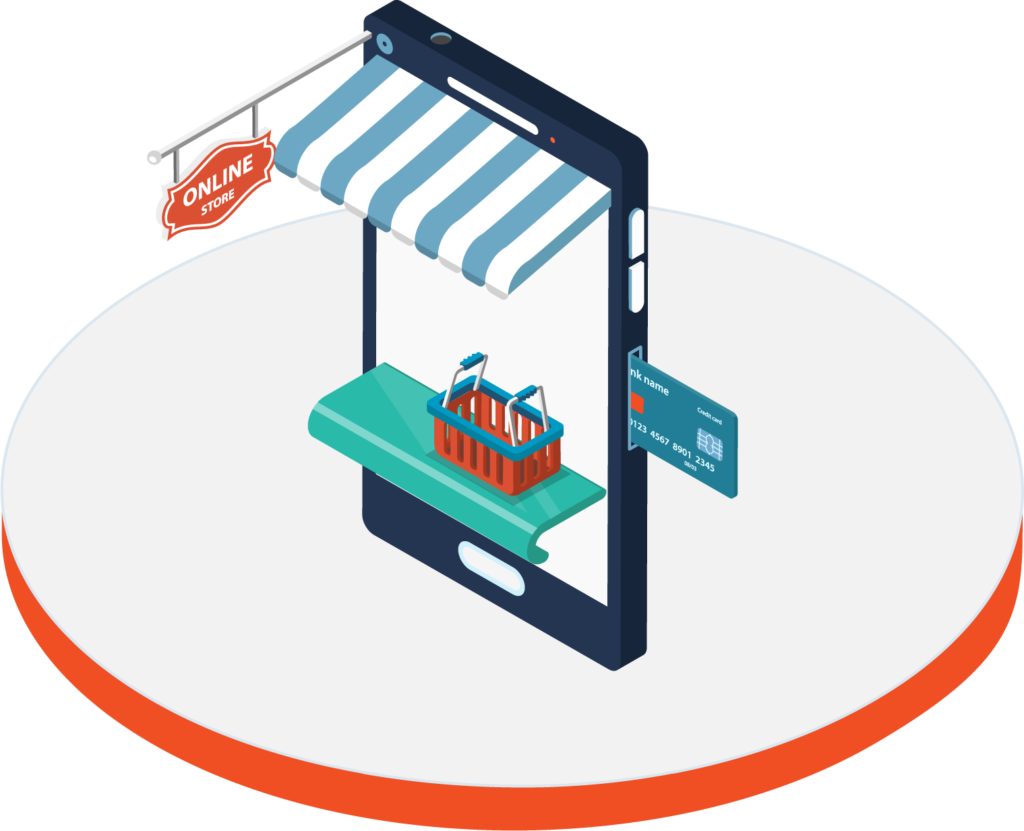
Mobile commerce accounts for nearly 73% of all online commerce and is growing. Further, customers spend 90% of their time on mobile using apps, so it makes sense retailers would increasingly see the channel as an opportunity to meet customers where they are and deliver a customized experience.
Starbucks’ mobile app is a classic example of mobile apps done right, with a personalized omnichannel experience throughout. While customers make their own playlists, they collect rewards across channels, add cash to their accounts, choose nearby stores, and order ahead for a convenient and consistent experience.
Social Media
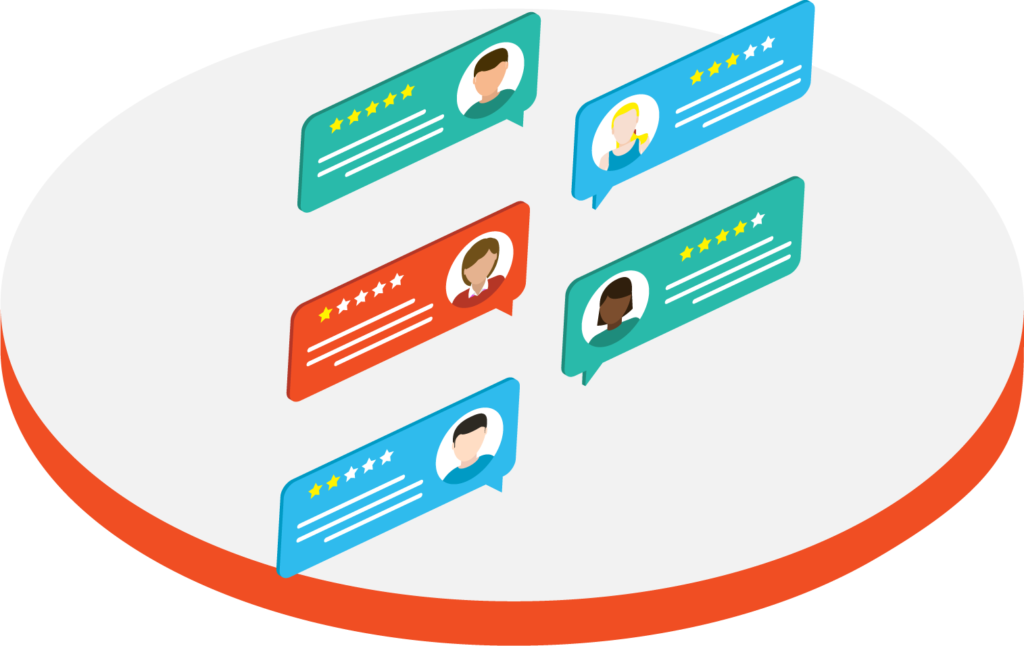
Social media is a driver of purchases, with millennial buyers saying they trust 84% of recommendations from friends on social media but only 10% of ads they see online. Social influencers increasingly promote brand awareness and sway purchasing decisions with coupon codes. Once a site for product research, social media sites increasingly feature “buy” buttons for customer interaction. Shoppable Instagram posts let buyers make in-app purchases from a brand’s photos and videos across the app. Pinterest has also introduced shopping page results with purchase capabilities.
Brand leaders can also use transactional bots and chat programs within social media apps. Chatbots use machine learning to handle transactions within an app or message-based channels, from Facebook messenger to SMS or on an eCommerce website. You can make your own Twitter chatbot to help manage all kinds of customer needs, from order confirmation to personal shopping assistance. Like social media POS systems, chatbots eliminate the need for customers to switch channels to get their needs met and personalize the customer experience.
Wholesale
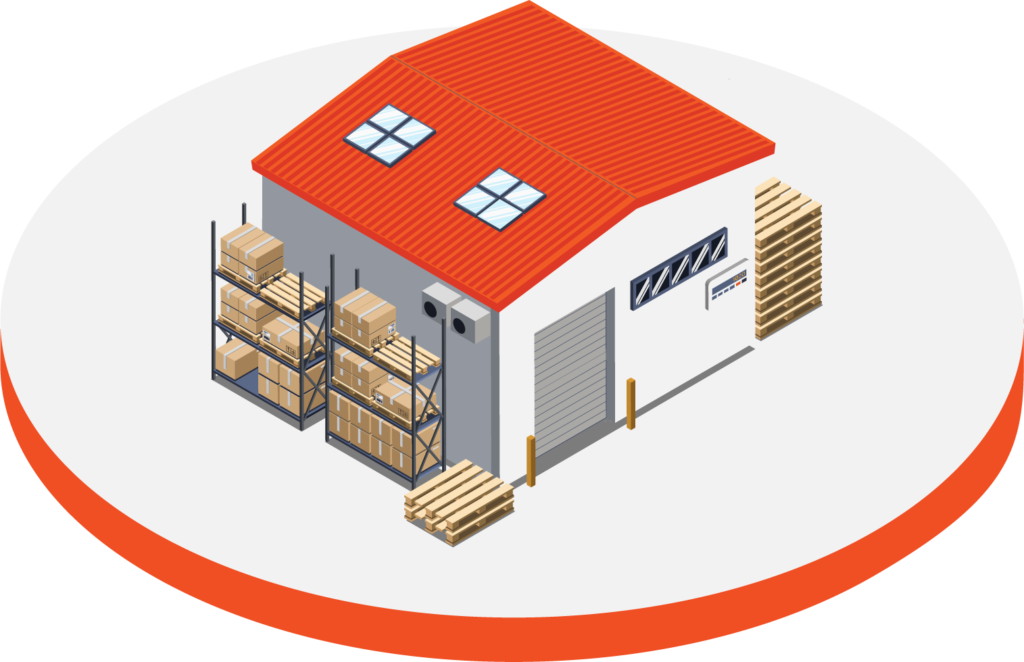
Alongside retailers, wholesale brands have responded to rapidly shifting demand online and in partner stores following lockdowns and differing regional COVID restrictions. Omnichannel can help support their retailers by allocating products to eCommerce channels when stores are closed.
It’s about partnership. Think about whether distributors, sales reps, and customers reach you in ways convenient for them and how you can make ordering and fulfillment flexible to meet the demands of your buyers.
Fulfillment
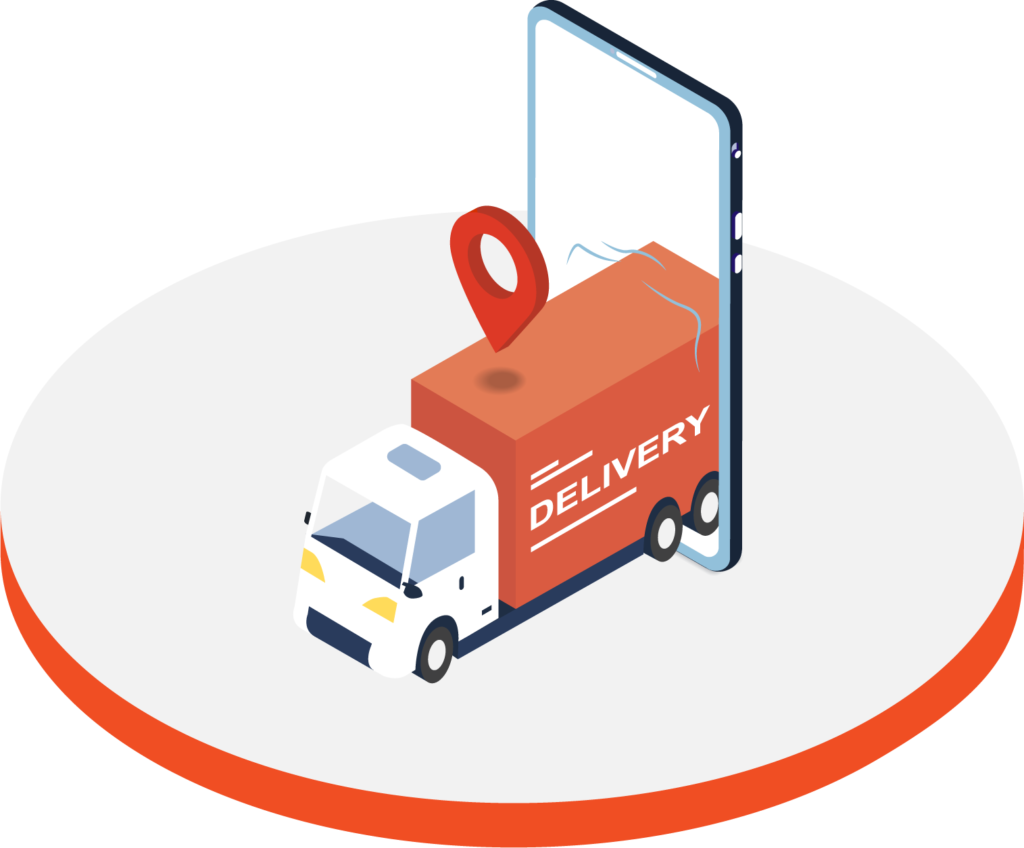
Omnichannel fulfillment is a way of satisfying customer needs, but it forces retailers to coordinate their distribution networks in novel ways: their own stores, warehouses, partner stores, drop shipping, and logistics. In all of these omnichannel fulfillment options, the goal is to give customers more options and provide them with quick delivery. Fulfillment options increasingly include more and more of the following:
- Home delivery–Brands need a 50,000-foot view into company inventory and distributed order management to optimize the fast, affordable home delivery customers expect. That includes last-mile delivery, the most inefficient step of the process when goods arrive at a customer’s doorstep.
- Curbside pickup–Staying in the car appeals to customers long after pandemics wane, since it’s simple and easy. Convenience is one of the most important considerations for customers.
- BOPIS–Curbside pickup is part of Buy Online Pick Up in-Store (BOPIS) sales, skyrocketing 87% in early 2020. It’s convenient but requires a retailer to have systems in place to ensure inventory availability in the store.
- BORIS– Buy Online Return in-Store allows customers to purchase from a website and return an item to a nearby store, increasing purchases by reducing the fear that items will require repackaging hassle and return shipping fees.
- Dark store fulfillment–Dark stores offer only ship-from-store fulfillment, a side effect of COVID restrictions when stores are closed to foot traffic. Dark store fulfillment lingers because these small, urban fulfillment centers offset last-mile delivery costs. To effectively implement this strategy, use existing point of sale software to manage and decide whether returns will come back to the store or a distribution center.
- Ship-to and ship-from store– Stores that allow shopping can also serve as fulfillment centers, delivering inventory to nearby customers. In a related scenario, customers can have goods shipped to the store for pickup, saving shipping fees and allowing for faster fulfillment.
- Dropship: 84% of retailers report better customer service using drop shipping, which lets customers access home delivery with fewer costs and steps. However, customer satisfaction falls to manufacturing partners. That necessitates good communication about inventory and shipping times. Collaboration drives drop shipping’s positive results.
Why Do You Need Omnichannel Retail?
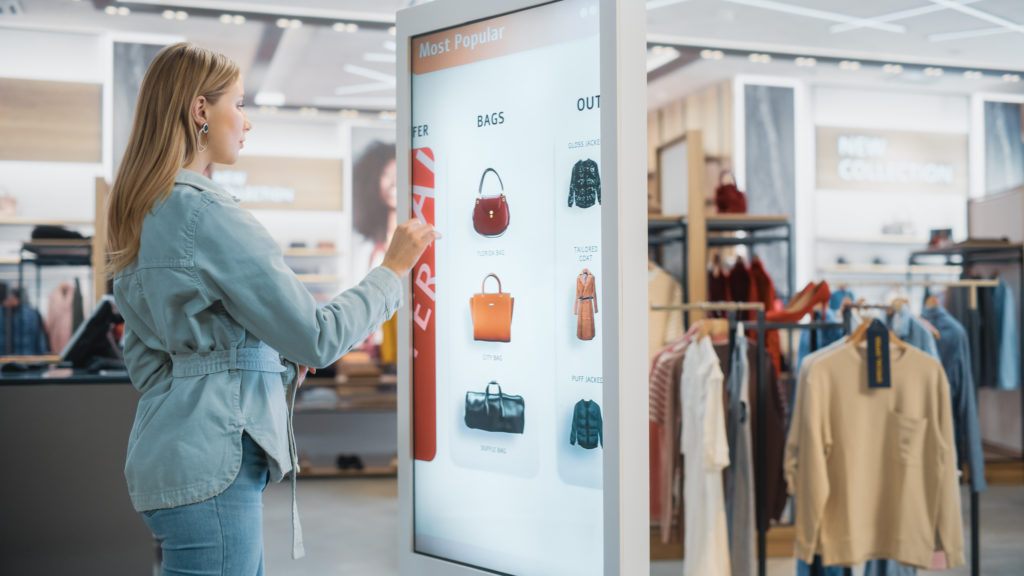
The synergistic promise of omnichannel marketing means payoffs for firms. Because it enhances communication, access, availability, and transparency, it can raise lifetime value, market share, and profits. Centralizing customer data through unified commerce is part of the equation since it allows for marketing campaigns across customer touchpoints, leading to brand loyalty and increasing sales from a customer-centric point of view.
Let’s look at some key statistics:

zz
Campaigns using an omnichannel approach have a purchase rate 287% higher than single-channel campaigns. In 2020, Order value was up 13%. And the order gap is only widening.

zz
Omnichannel shoppers are valuable, with a 30% higher lifetime value than their single-channel counterparts.

zz
The number of orders placed online and then picked up curbside rose 208% during the pandemic. The trend continues as customers hope to avoid waiting on items they might otherwise have delivered.

zz
39% of customers are unlikely or very unlikely to visit a physical store if the online store does not provide inventory information for their location.
Business Impact of Omnichannel Retail
A 360-degree view of customer activities helps enterprises offer channels that appeal to customers, get the information they need when they need it, and increase value in five core areas.
1. Enhanced Brand Reputation and Customer Loyalty
- Omnichannel companies reap customer retention increases 91% higher than multichannel competitors. They enjoy 3.4% higher customer lifetime value increases year-over-year.
- It offers, by definition, more choice to consumers. While the products don’t change, the mode of delivery, for example, pick up, shipping, or seeing store inventory before leaving home, entices all kinds of shoppers to purchase in ways that work for them.
- You can build loyalty programs that track users across channels, personalize the customer experience, and increase customer engagement.
2. Supply Chain Resilience and Flexibility
With a bigger network and multiple nodes, omnichannel can leverage partner capabilities better than legacy systems. It’s also more attuned to customer needs. Transportation costs and times can be tuned to multiple channels and markets, dramatically lowering costs and increasing revenue cycle efficiency.
3. Realigned Cost Structure
- It eases margin pressures. Retailers can construct a single inventory stream and virtualize it for each channel. That increases retailer margins and flexibility, as companies can redirect inventory earmarked for one channel to where it’s needed. That lowers carrying costs for inventory while allowing customers to buy from any channel. It provides flexibility even as it protects margins in an increasingly complicated supply chain.
- Buying larger inventory quantities to support omnichannel marketing can also secure bulk buying and economies of scale advantages.
4. Improved Health and Safety for Shoppers
- Contactless payments were a retail buzz term long before COVID upended the shopping experience. Now it’s a safety bonus, too. Even in person, shoppers appreciate faster, secure payments with less friction.
- Customers can order online, in the safety of their homes, and pick up their items in a store. Curbside pickup and home delivery round out options that have helped enhance the shopping experience, grow loyalty, and retain customers who are keen to shop safely without worrying about their health. The trend shows no signs of abating in a post-pandemic world. After all, there have always been vulnerable customers looking for a healthier experience.
5. Increased Profitability
Local fulfillment helps companies avoid rising shipping costs and sidestep delivery delays, enhancing profitability. Omnichannel retail is a customer-centric development ― it allows for customer preferences, not a single system, to dominate the fulfillment experience. However, enterprise leaders who plan their supply chains can also realize the benefits.
What Kinds of Retailers is Omnichannel Good For?
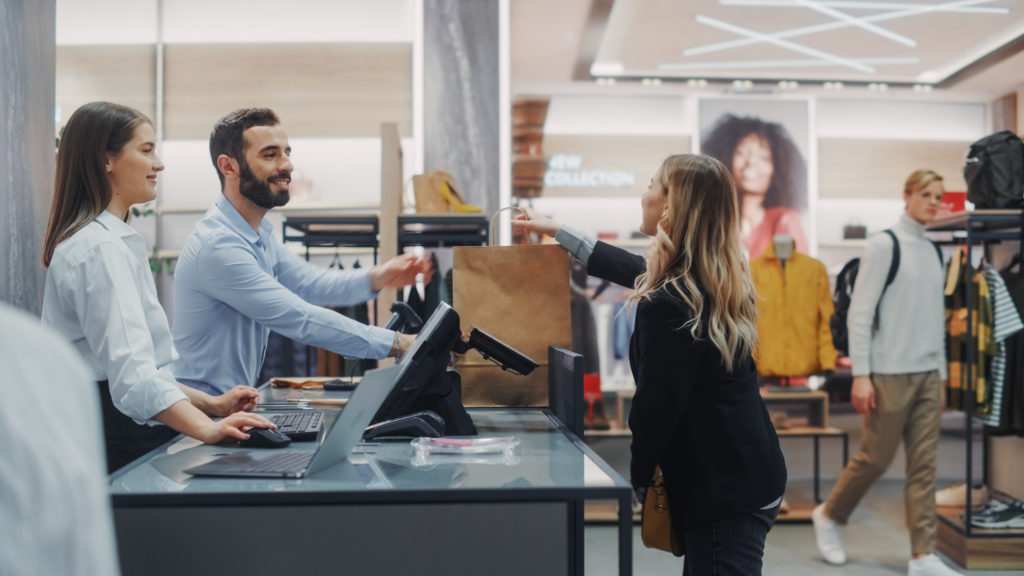
Omnichannel is not only suitable for retailers of all sizes, it’s an essential strategy. Large companies benefit from an increasingly frictionless customer experience. Small retailers get better market data and customer segmentation, but both benefit from more interaction with customers. In a world where over half of customers use multiple channels to make purchases, failing to take part in the customer journey at every step means losing opportunities to educate and engage.
Omnichannel retail was growing prior to the COVID-19 eCommerce spike. But lockdowns did significantly alter buying behavior, and those expectations remain. That makes omnichannel retail more important than ever. Customers have seen new methods of delivery, new ways to learn about products, and new options all along the buying journey. They aren’t likely to surrender them, so omnichannel’s growth continues. At the height of the COVID-19 crisis, the omnichannel retail platform industry hit $5 billion but is projected to rise to $14.5 billion by 2027, growing at a CAGR of over 14.8%.
Omnichannel’s popularity builds on increasing demand for the “phygital” — digital experiences within the physical world. As customers spend less time in stores, their visits take on new meaning. They don’t come just to buy products, which they could do online. Instead, they come to compare, research, and explore.
How Do You Know When You Need an Omnichannel Retail Solution?
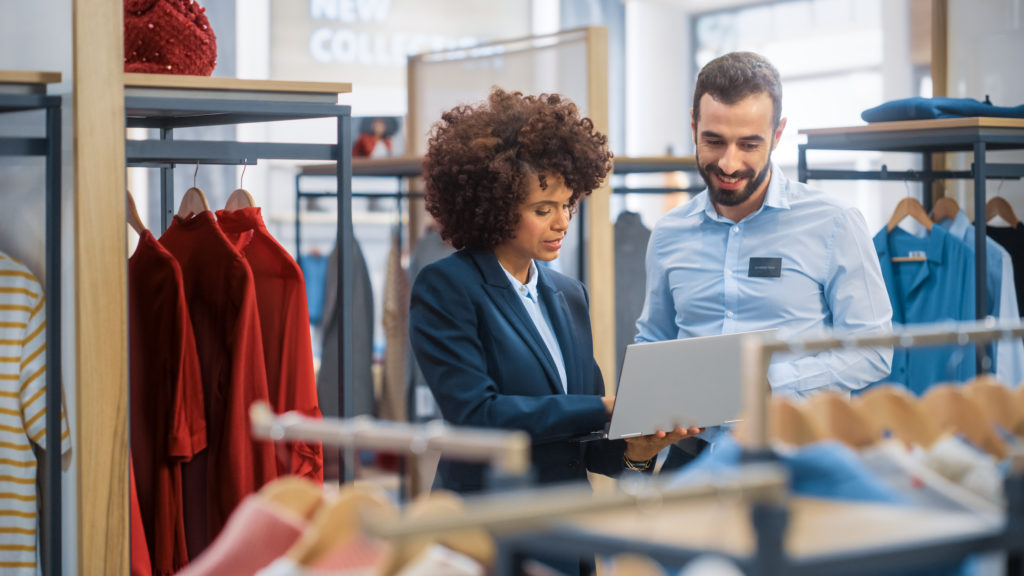
Because the shift to omnichannel can include multiple threads, it’s helpful to know when you’re ready to implement.
Here are six guidelines:
1. Reclaim Customers
Your brick-and-mortar stores are still recovering from the pandemic, and new channels could rekindle your lost relationships. Omnichannel is a competitive differential that includes the entire customer lifecycle. Not only can the approach stimulate shop activity, but it can also grow your retail ecosystem outside retail shops.
2. Web and Social Growth
Your web and social traffic are growing. Customers are still moving through the customer lifecycle but in new places. Have you added transactional social commerce? Options for customers to reserve online but pick up in-store? What about via a touchless check-out app while checking inventory in their preferred channels?
3. Inventory Visibility
Customers, salespeople, partners, and other stakeholders ask when and if your products will be available online. Online retail is growing. eCommerce sites serve as ordering platforms but also places to research cost and availability before venturing to stores. Retailers who do not offer both experiences miss the chance to capture store customers and online business.
4. Plans for Growth
You’re planning growth in new markets. Market discoverability is globally scalable with omnichannel orchestration. Channels can be localized, but digital reach is broader.
5. Acquiring New Suppliers
You’ve added new vendors and suppliers to your supplier network and want to make fulfillment more efficient. Your retail supply chain is getting more complex, and you need a broader view to plan for demand and realize shipping efficiencies.
6. Drop in eCommerce Sales
eCommerce sales are suffering because customers want to experience your product physically. Omnichannel offers the opportunity to reach customers who feel safer at home with digital experiences, bringing products to them. It also recognizes the strategic importance of the showroom experience for retailers with products customers love to see in person, from glasses to high-end furniture, exercise equipment, or mattresses.
Steps for Creating a Successful Omnichannel Strategy

One scholar characterizes omnichannel adoption as “crawl, walk, run, sprint,” while another identifies omnichannel orchestration as having “beginning, middle, and final ” stages. Needless to say, the process is incremental.
A successful journey advances through these four steps:
1. Identify Your Channels
Like many retailers practicing multi-channel, you’ll first identify where your audience lives and determine the channels that are most appropriate for them across:
- Brick and mortar or kiosk
- Website
- Social media platforms
- Mobile app or optimized mobile website
- Marketplaces
In this stage, retailers have a sense of their company’s desired channels or a working multichannel strategy with minimal integration. Channels are independently planned and implemented, and each has its own customer loyalty. Different items might be shipped from separate supply chains depending on the channel. Channel owners cannot see how other channels perform or where customers go when they leave their channel. They may not share customer information, inventory, or strategy.
2. Enable Purchases and Payments Across Channels
Methods can include:
- A new self-check-out or a staff check-out counter in a brick and mortar store
- An eCommerce shopping cart in your online shop with available curbside pickup (BOPIS) or home delivery
- Buy-now capabilities on social media channels like shoppable posts on Instagram
- A mobile app or optimized mobile website for anytime/anywhere purchases
This stage requires some overlap between channels. For instance, customers who buy online and return in-store (BORIS) will likely meet your staff check-out person, who will need to process items that were not initially sold in that store.
3. Create a Consistent Brand Across Channels
- Bridging the communication gap across channels heightens the need for consistency across channels. For example, your check-out staff will need training on items not sold in stores. Return policies and pricing should also align to accommodate the customer’s return.
- Standardized corporate logos, fonts, colors, messaging, tone, and descriptions make maneuvering between channels even easier.
- Invoking the brand’s mood and creating a more seamless experience increases brand loyalty for customers.
4. Unify Online and Offline Channels
Create a single source of truth.
- Omnichannel orchestration includes common inventory, sales, pricing, and replenishment data.
- Personalize the shopping experience with a high degree of integration between apps and touchpoints. For example, a customer who makes an in-store purchase should no longer see ads for that item online.
This is the highest level of integration. It actualizes a seamless customer experience across the buying journey and company channels, integrating marketing, supply chain, customer service, and brand.
An integrated omnichannel retail system can alert nearby customers of a new store opening in their area. It can send customers an offer based on their purchase history online and in stores. And it can get a product to them quickly no matter where it was ordered.
Businesses can have operations across these phases. For example, they may allow returns across channels regardless of product assortment but not share customer data across channels. Ultimately, a retailer must break silos for profit and loss reporting data, inventory, supply chain, and customer databases to realize the true potential of omnichannel.
A Phased Approach to Omnichannel Orchestration
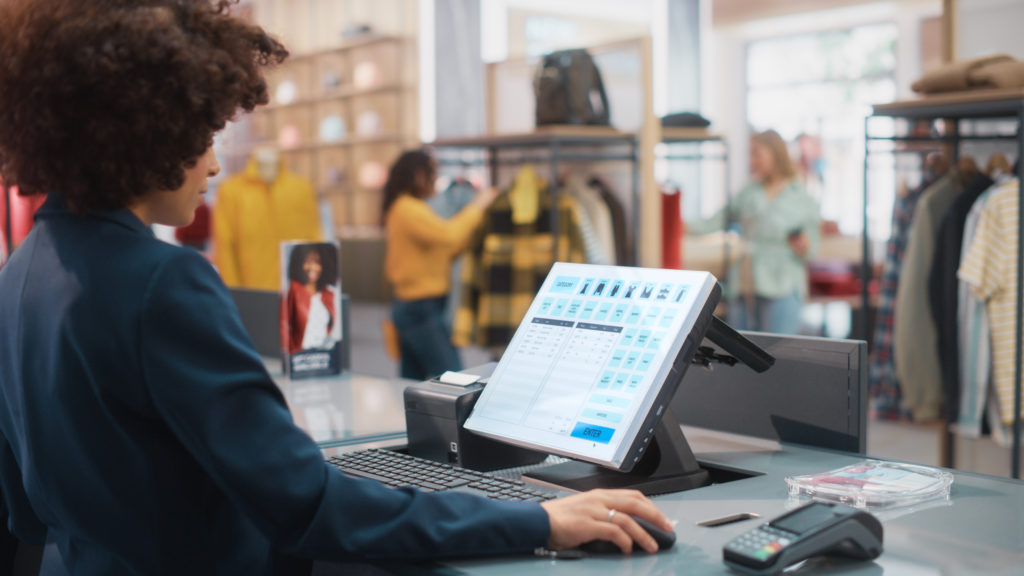
The multiple steps in omnichannel orchestration suggest a phased, rather than a single, behemoth implementation. After all, Rome wasn’t built in a day. The largest implementations take time and build on strategic goals to integrate channels, one benefit at a time.
Here’s what to look for in an omnichannel retail management system:
It Has Cloud-based or Hybrid Options
Cloud-based systems are more efficient. They’re a simplified, adaptive operating model that automates many previous IT operations. Over 90% of users also find it easier to comply with government regulations.
- It’s more secure: Cloud hosts monitor full-time security. And 94% of those IT departments reported improved security after switching to a cloud system, with less infrastructure patching.
- It’s resilient: It embodies a variable-cost model that allows for organizational resilience amid changing revenues, which reduces risk. Its transparency also identifies new opportunities for efficiency.
- Hybrid options allow for synchronization to the cloud if and when the Internet goes down and systems are offline. Transactions and purchases can still occur and data can sync when systems are back online.
It’s Fully Integrated
- It allows for a single source of truth for sales, inventory, and customer data aggregated from multiple systems and channels.
- Successful digital transformation starts from business goals and strategies, not just the need for a new IT system. Integrations need to account for all the systems you need to link. According to one 2021 study, the challenge in implementing an ERP system is integrating all customers’ and suppliers’ systems, but doing so is key to a future system that delivers the business intelligence needed.
- Map your existing processes and customer journey. Your omnichannel strategy should reflect how customers want to buy from you, not how your current system operates or how your company is organized.
It’s Modular and Scalable
- New channels are always emerging, so integrations should be customizable.
- Components should be modular to account for changing customer behavior. You’ll add channels, but also options based on evolving customer preferences.
- Scalability means you have access to the computing power needed to grow. That could mean on-demand computing power and cloud storage. Think about other scalability concerns, too.
- Can your ERP handle multiple currencies? Is it available in various languages?
- Can it account for multiple offices working in different locations across time zones with the same data?
- Multi-tenant cloud architecture allows multiple users to share software applications and a single database. Each tenant’s information is isolated, and the approach makes it easier to integrate with other apps using APIs.
It Provides Robust Financial Reporting and Business Analytics
- You’re able to track important retail KPIs. Some of the most significant retail KPIs your ERP should be able to track are gross margin return on investment, turnover, returns, and sell-through percentage.
- Scenario planning can help lower supply chain network costs in different channels and improve price-setting strategies.
- Integrations that enable a single source of truth are growth levers. For example, accounting for your entire inventory can help capacity planning and improve sales potential.
It Has Rich Features for Modern Retail Operations and Store Operation Management
Features should include:
- POS and contactless payments
- eCommerce
- Mobile
- Inventory management/Replenishment operations
- Warehouse management
- Retail supply chain management
- Store/channel performance management, including business intelligence to improve operations
- Demand planning, forecasting, and replenishment
- Marketing and promotions/loyalty programs
Shoppers are returning to stores more digitally savvy than ever before. They’re hungry for physical experiences built on digital ones, applying online knowledge to the real-world shopping experience. On top of it, they expect lightning-fast shipping and flexible delivery options. In other words: omnichannel is here to stay.
How ArcherPoint Can Help
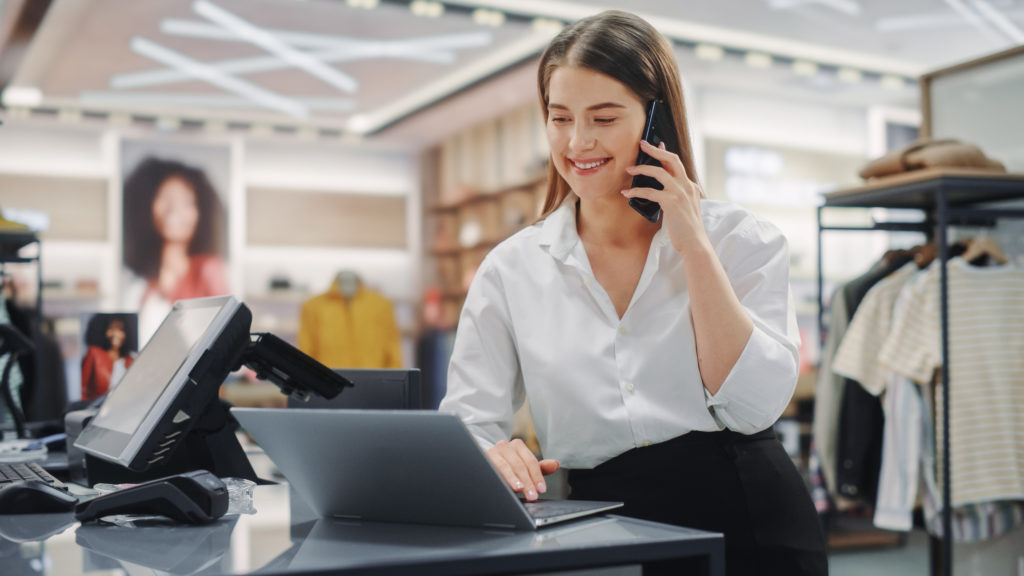
Working with a partner like ArcherPoint can help integrate channels to meet customers’ new expectations, giving you the solutions, guidance, and expertise you need to adapt to the new retail landscape.
Talk to one of our sales consultants about how partnering with an experienced retail operations partner can help your business unleash the power of omnichannel retail.


